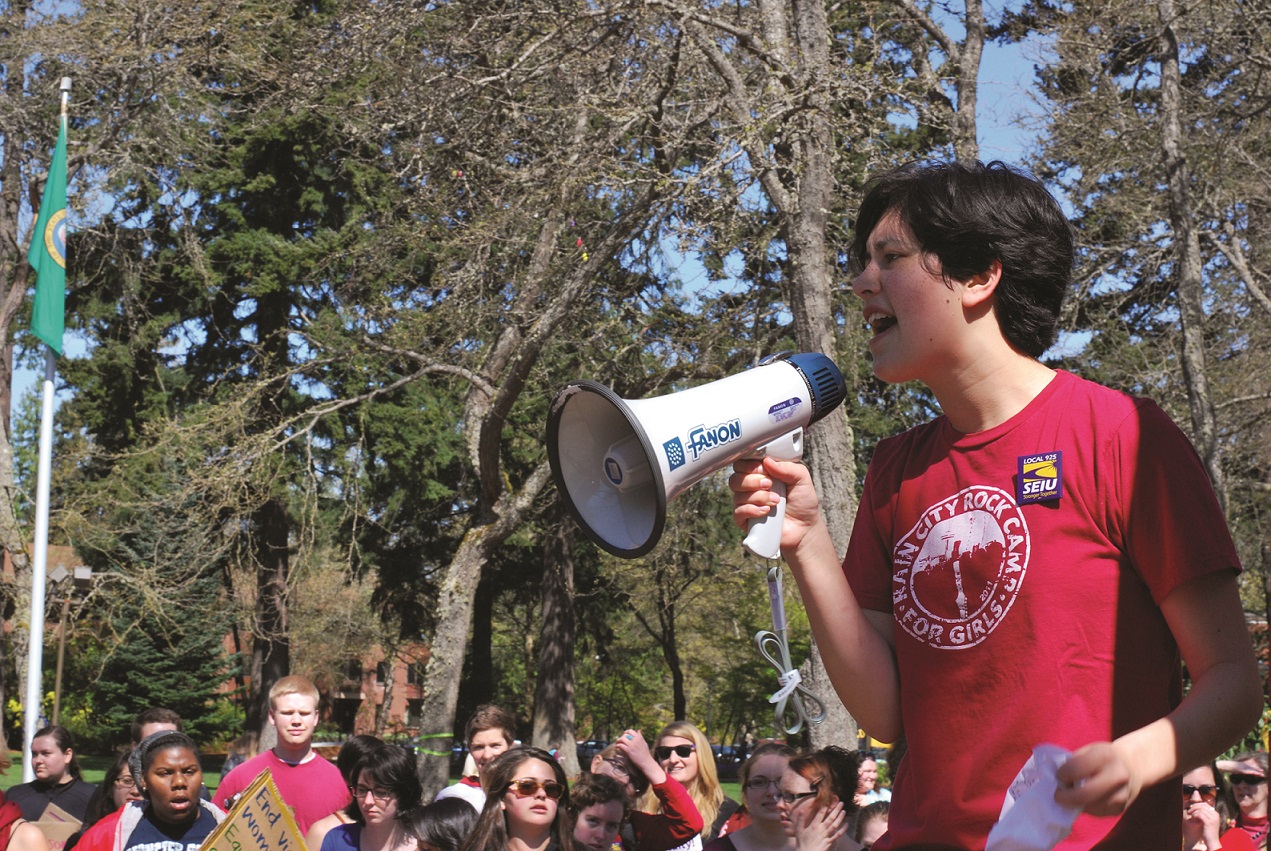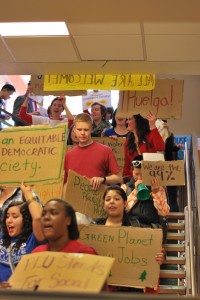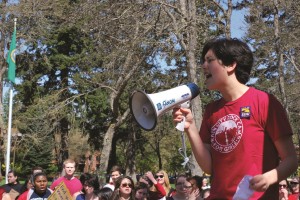
Workers Day march helps students ‘connect the dots’
By Caitlin Beesley and Dania Tolentino, Guest Writers
Rather than handing out baskets of flowers on May 1, Pacific Lutheran University students converged on Red Square at a rally to protest and educate citizens on social issues surrounding International Workers Day.

International Workers Day, sometimes referred to as May Day, is a national holiday in more than 80 countries, including the United States. It is seen as a day set aside specifically to improve working conditions.
Recently it has been spent bringing awareness to the dangerous conditions workers experience in developing countries, but it has also been touted as a day to remind people of the economic disparity between the working and corporate classes.
The PLU community, as sophomore Carly Brooks sees it, has neglected its part in May Day protests and economic injustices against workers, which she said is surprising for a school that is supposedly liberal.
“It’s a huge day of organizing [for the rest of the world]. What we wanted was to bring it to campus,” Brooks said, who is a member of Students of the Left, which sponsored the rally, and Latinos Unidos.
Approximately 50 people attended the PLU May Day rally at 10:30 a.m. After gathering in Red Square to hear presenters from Students of the Left share statistics about labor inequality around the world, students and faculty alike marched through campus shouting slogans like “union power!” and “the people, united, will never be divided.”
Afterwards, Brooks and senior Kenny Stancil, founder of Students of the Left and May Day rally organizer, took a group of 15 students and faculty members to the larger Seattle protest “We Are All Workers! Immigration Reform Now!”
Rallies and marches are often an integral part of May Day, where citizen workers can protest injustices that occur in the workplace.
The brainchild for PLU’s May Day march was the larger rally for International Workers Day and immigration reform.

“I’ve gone to it, because it could make a difference and so other people know it’s affecting people in the United States,” senior Wendy Martinez, Latinos Unidos member, said.
“I don’t see these issues as separate issues from college issues. We’re human beings and … citizens of the world,” Brooks said.
Martinez organizes workshops at her church to educate the latino community to help students and citizens learn about their rights as immigrants, legal or otherwise. Immigration lawyers are often guests at her talks.
“There’s a lot of educating other people about the issue, but also educating the community that’s affected,” she said.
When asked whether immigration reform might be adversely affected by the recent Boston Bombings suspects’ immigration status, Martinez replied, “I think when things like that happen, immigration … takes the back seat.”
Brooks said she believes the problems of immigration reform and the problems International Workers Day aims to end are correlated in that they’re both consequences of capitalism.
Corporations, she said, rely on “exploitable and controllable” workers, who are pitted against one another when acts of terrorism are tied to immigration issues.
“If workers were united, they would have a lot more power than those corporations,” Brooks said.
Stancil, Brooks and Martinez all cited capitalism as being one of the common sources for the various oppressions their different groups speak out about.
However, it isn’t just about identifying the source of inequality, or even raising awareness for these three young advocates.
“We want to see where it intersects,” Stancil said.
What Brooks ultimately said she wants after the event is for people to see how particular social justice issues are connected to a larger economic narrative. She mentioned Progress, GREAN and the Women’s Center, and said she hopes they know their individual activisms are all interconnected.
“I would love for all of those groups to connect the dots on these issues and paint a bigger picture in the way that they’re all interconnected,” Brooks said.
















